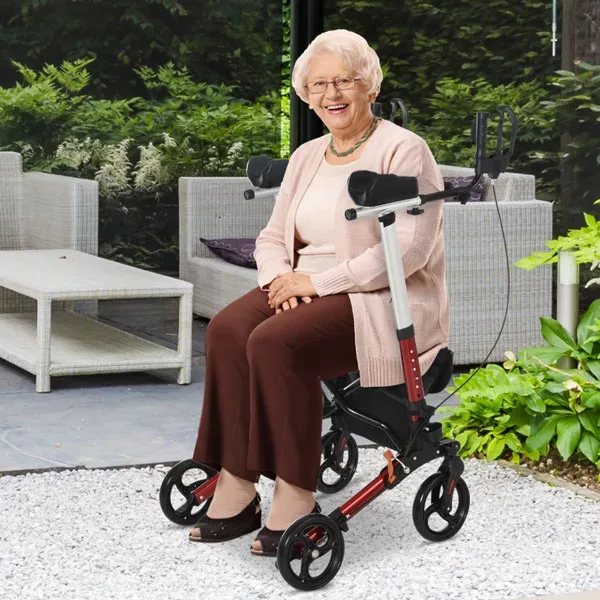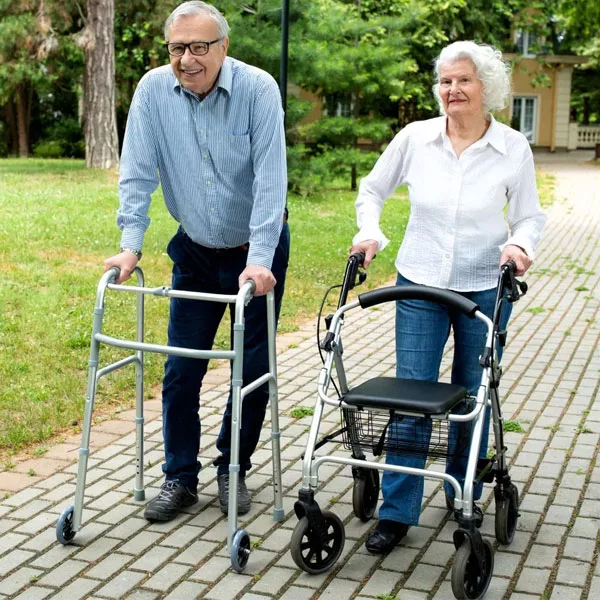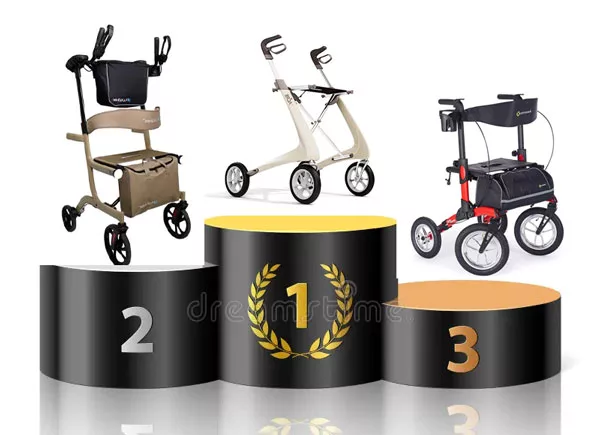How Can I Fall Asleep with Insomnia: A Friendly and Practical Guide to Catching Zzz’s by Vanika
Wondering how can I fall asleep with insomnia? Discover gentle, proven ways to relax your mind, improve sleep habits, and finally get the rest you deserve.
Trouble sleeping last night? Don’t worry, you’re not a broken robot—you’re a tired human with an overachieving brain. Same. In this guide, I’ll share practical, science-backed tips (plus a few personal “learned the hard way” moments) to help you quiet the midnight mental circus and finally get real rest. We’ll keep it friendly, honest, and doable. Let’s tuck in.
What Is Insomnia, Anyway? (And Why Should You Care?)
Insomnia isn’t just “one rough night.” It’s a pattern—trouble falling asleep, staying asleep, or waking too early—often for weeks. The American Academy of Sleep Medicine estimates about 30% of adults bump into insomnia at some point; roughly 10% get stuck in the chronic version (three months+). Translation: you’re in crowded, yawning company.
Insomnia can be short-term (life is lifing) or long-term (hello, anxiety, hormones, health). And it’s not just about being cranky. Sleep disorders, like insomnia, affects mood, memory, immunity, and long-term heart health. It makes you feel tired the following day for sure. I once had a three-week streak where I forgot a password, a birthday, and—peak performance—parked my keys in the freezer beside the peas. Sleep matters.
So, how can I fall asleep with insomnia? We’re going to build this like a gentle staircase: awareness, environment, routine, techniques, and backup plans. Let’s build some healthy sleep habits.
The Sleep Struggle Is Real: Why Falling Asleep Feels Impossible
If you’ve ever stared at the ceiling while your mind narrates tomorrow, next week, and a random third-grade memory—yep, same. Common culprits:
- Racing thoughts: Your brain’s doing jazz hands and calling it “planning.”
- Sleep-unfriendly habits: Irregular bedtimes, phones in bed, “one more episode.” Trust me, blue light is not your best friend if you want to feel sleepy.
- Physical discomfort: Pain, restless legs syndrome, a hot room, a traitor pillow.
- Mental health: Anxiety and depression love to photobomb sleep.
- Hidden sleep disruptors: Sleep apnea, periodic limb movements—quiet wreckers.
I keep a tiny bedside notebook. Three quick lines before lights out: what I did the last hour, how sleepy I feel, and what woke me last night. After a week, patterns show up wearing fluorescent vests (looking at you, 5 p.m. espresso and heated bedroom). Awareness turns the monster under the bed into a dust bunny you can actually sweep.
Setting the Stage: Sleep Hygiene Habits That Actually Help You Sleep
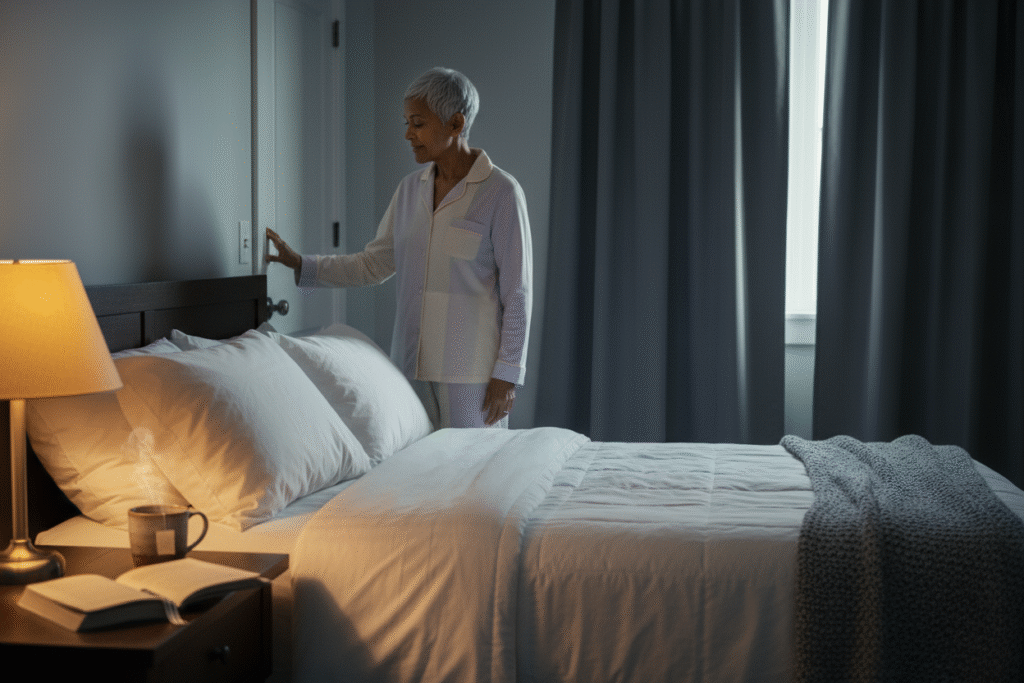
Your room and routine can either whisper “sleep” or yell “stay awake.” We want whisper. Cozy, boring, wonderful whisper.
1. Keep a Consistent Sleep Schedule
Same bedtime, same wake time—weekends included. Your circadian rhythm loves rhythm (go figure). The National Sleep Foundation notes that consistency helps you fall asleep faster and wake up clearer. I set a gentle wind-down alarm; it’s my phone’s kind way of saying, “Powering down the human in 60 minutes.”
Small but mighty rule: If you’re awake after ~20 minutes, get out of bed. Low light, low stimulation—stretch, breathe, flip through a paper book. Return when sleepy. This retrains your brain that bed = sleep, not a strategy meeting about everything ever.
2. Create a Wind-Down Ritual
Give your brain a landing strip. About few hours before bedtime, start downshifting: dim lights, warm shower, herbal tea (I like chamomile or magnesium), three pages of actual paper-and-ink fiction, soft music. Avoid email triage, money talks, and anything that spikes adrenaline. You’re not hustling; you’re landing the plane to your own bed.
Add a repeatable sensory cue: a certain lamp, a lavender pillow mist, that favorite throw blanket. Your nervous system loves familiar “we’re safe” signals.
3. Make Your Bedroom a Sleep Sanctuary
Dark, quiet, and cool—around 65–68°F (18–20°C). Blackout curtains or an eye mask, earplugs or white noise, a supportive pillow you don’t secretly resent. And the rule that changes everything: bed is for sleep and sex. No laptops, no spreadsheets, no “just one episode.” When I finally evicted my laptop, my time-to-fall-asleep shrank within a week. Boundaries are sleepy magic.
Small upgrades, outsized impact:
- Eye mask / blackout shades
- White or brown noise (rain, fan)
- Clutter-free nightstand (your brain reads mess as “unfinished business”)
- Fresh sheets weekly—tiny luxury, big cue
4. Limit Caffeine and Limit Alcohol
Caffeine’s half-life is sneaky—about 6 hours. That 4 p.m. latte is still circulating at 10 p.m. Try a cutoff by early afternoon. This is not new to anybody – caffeine and alcohol can keep you awake longer than you want them to. Alcohol might tuck you in, but it slices up deep and REM sleep later. I swapped to herbal tea after 2 p.m.; my 3 a.m. wide-awake cameos dropped from “nightly” to “occasionally rude.”
Tried-and-True Habit Forming Techniques to Help You Fall Asleep Faster
When your mind won’t cooperate, reach for tools that ease your body and nudge your nervous system.
Progressive Muscle Relaxation (PMR)
Tense and release muscle groups from toes to forehead. A Journal of Behavioral Medicine study links PMR with better sleep by easing body tension. Quick flow: toes (5 seconds), release; calves, thighs, belly, hands, shoulders, jaw, forehead. By the end, you’re basically a warm croissant. Bonus: whisper “soften” on each exhale. Corny? Maybe. Effective? Absolutely.
The 4-7-8 Breathing Method
Popularized by Dr. Andrew Weil: inhale quietly for 4, hold 7, exhale slowly for 8 through pursed lips. Do 4 rounds. By round three, my shoulders drop and the internal narrator takes a coffee break. It’s a gentle “downshift” for your parasympathetic system.
Visualization and Guided Imagery
Give your brain a better scene when you’re having difficulty falling asleep. Picture someplace safe and gently boring: foggy beach at sunrise, a cabin with rain on the roof, an old library with a dozy dog by the fire. Engage senses: what do you hear, feel, smell? Apps like Calm, Headspace, or Insight Timer can walk you through it if you like company.
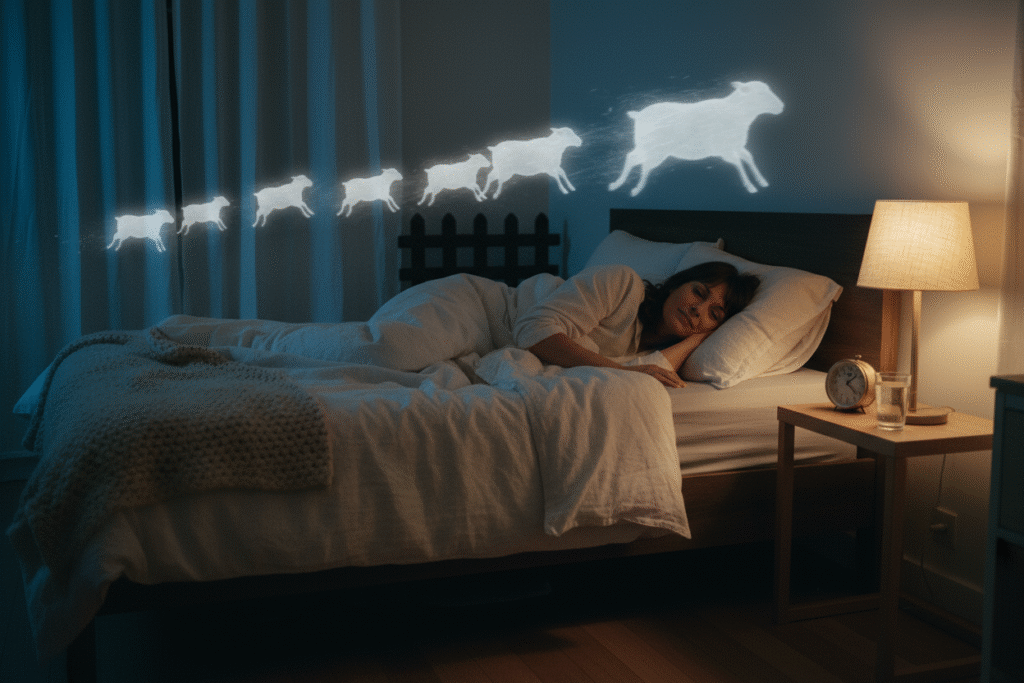
The Military Method
A favorite in loud, stressful environments. Relax your face, drop your shoulders, exhale fully, relax legs, then clear your mind for 10 seconds. If thoughts barge in, repeat “don’t think” or return to your calm scene. Not magic, but with a week or two of practice, surprisingly reliable.
Sleep Aids: When and How to Use Them Wisely for a Better Sleep
Think of sleep aids as scaffolding while you rebuild the house. Useful, but not a forever home.
Over-the-Counter Options
Antihistamines (diphenhydramine) can knock you drowsy but often leave a foggy hangover and lose effect quickly. Melatonin helps with timing (jet lag, shift work), not knockout force. If you try it, start low (0.5–1 mg) 1–2 hours before bed. More isn’t better—too much can mean groggy mornings.
Prescription Medications
Short-term prescriptions can be appropriate with a clinician’s guidance, but they’re not intended for long-term insomnia due to tolerance and dependence. If used, pair with behavioral strategies (like CBT-I) and keep dose/time minimal.
Natural Alternatives
Some folks find gentle help with valerian root, passionflower, chamomile, magnesium glycinate, or lavender aromatherapy. Always check with your clinician—“natural” can still interact with meds. Aim for subtle nudges and track next-morning feel.

When to Call in the Healthcare Professional (Sleep Specialists)
If you’ve tried consistently for a couple of weeks – relaxation technique, chamomile tea, ear plugs, no cellphone, and etc. – and nights still feel like Groundhog Day, bring in backup. A sleep medicine specialist can rule out apnea (snoring, gasping), restless legs, circadian issues, and mood disorders.
They might recommend cognitive behavioral therapy for insomnia (CBT-I)—the gold standard with staying power. It fine-tunes sleep timing (sleep restriction), strengthens the bed-sleep link (stimulus control), and rewrites unhelpful sleep thoughts (cognitive work). Practical, skills-based, and genuinely empowering.
Lifestyle Tweaks That Boost Sleep Quality
Daytime you sets up nighttime you. A few levers with real payoff:
- Move your body: Regular activity deepens sleep. Morning or early afternoon is ideal; save intense workouts for earlier. Evening? Think gentle yoga or stretching.
- Nap smart: If you must, keep it 20–30 minutes before 3 p.m. Long late naps borrow from nighttime sleep.
- Morning light: Ten minutes of sunlight anchors your internal clock better than any productivity hack. Coffee + porch = elite combo.
- Stress hygiene: Ten-minute meditation, a therapy session, quiet activities, or a one-page brain dump can lower the night static.
The Cognitive Side: Calming the Mind That Won’t Quit
When your brain argues with bedtime, bring structure and kindness.
- The worry dump: 30–60 minutes before bed, write down to-dos, worries, reminders. Close the notebook and tell yourself, “It’s parked.” Brains love plans they can see.
- Paradoxical intention: Try to stay awake on purpose. Removing performance pressure weirdly invites sleep in through the side door.
If you’re repeating the same anxiety loop nightly, CBT-I can break it. It’s structured, teachable, and the gains stick.
Tech, but Tame It
Use tech as a nudge, not a judge. Soundscapes, breathing timers, gentle sleep stories? Great. Obsessing over sleep scores? Hard pass. Orthosomnia (stress about sleep metrics) is real. If your tracker tightens your chest, turn off detailed views and keep the habits.
Putting It All Together: Your 2-Week Plan to Reset Your Circadian Rhythm
A gentle reboot that respects real life, not a fantasy schedule.
Week 1
- Anchors: Pick a consistent wake time. Build a 60-minute wind-down (same order nightly).
- Environment: Dark, cool, quiet. Evict work and TV from the bedroom.
- Inputs: Caffeine cutoff by early afternoon. Avoid alcohol within 3 hours of bed.
- Techniques: PMR + 4-7-8 breathing nightly.
Week 2
- Stimulus control: If awake >20 minutes, get up briefly; return when sleepy.
- Daylight + movement: 20–30 minutes of morning light and a brisk walk.
- Cognitive: 10-minute worry dump pre wind-down; paradoxical intention if wired.
- Track lightly: Note bedtime, wake time, and what helped—no perfectionism, just patterns.
If you’re still stuck after two steady weeks—or you suspect apnea, restless legs, or mood issues—loop in a clinician. No medals for muscling through.
Wrapping It Up: How Can I Fall Asleep with Insomnia?
So, how can I fall asleep with insomnia? You stack tiny, boring wins: a steady schedule, a cozy cave of a bedroom, calm-breath tools, kinder thoughts, and help when you need it. That’s the recipe.
If you’re reading this at 3:07 a.m., I’m rooting for you. You’re not failing at sleep—you’re learning your system. Two weeks from now, you could be drifting off faster, waking less, and meeting the morning without side-eyeing the sun. And if you tuck your phone in a drawer tonight? Future-you might write a thank-you note—in very well-rested handwriting.
Sweet dreams—and may your pillow always be the cool side.



